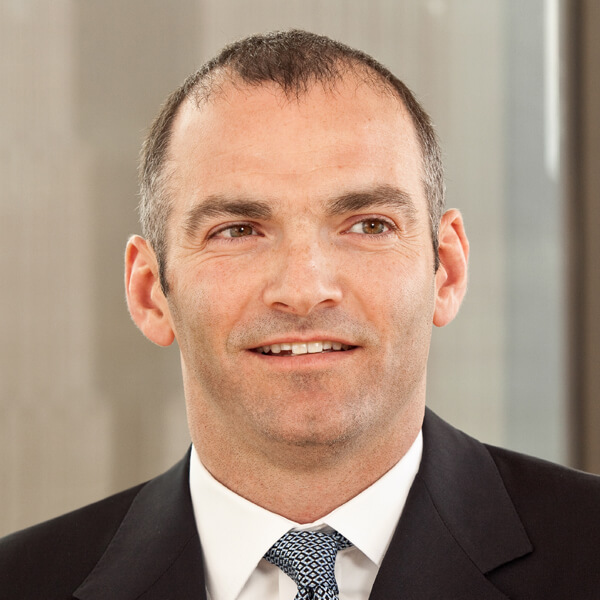Technology & Innovation
U.S. Equities
When The Growth Fund of America® launched, Richard Nixon was in the White House, the economy was mired in a deep recession and IBM, with a market capitalization of $36 billion, was the largest U.S. company.
It was December 1973, and Don O’Neal, now a co-president and portfolio manager for the fund, was in the eighth grade.
Much has changed over the decades. Today the largest U.S. company, Apple, is worth $2.8 trillion, and millions of consumers carry smartphones exponentially more powerful than the computers available in 1973.
Yet through waves of innovation, shifting consumer demands and various market cycles, The Growth Fund of America (GFA) has consistently maintained a flexible approach to growth investing.
“The key ingredients of our approach are selective investing, a long-term view and a commitment to diversification,” says O’Neal. ”GFA has the flexibility to seek out the most dynamic, innovative and best-managed companies across industries and sectors.”
Here, O’Neal and fellow fund co-presidents and portfolio managers Chris Buchbinder and Anne-Marie Peterson share four keys that have contributed to the fund’s durability.
1. Growth comes in many shapes and sizes
When you talk about growth, many investors think only of the classic Morningstar style box category. That includes rapidly growing companies, often trading at high multiples. GFA takes a broader view of growth, accommodating opportunities for capital appreciation.
In our search for great companies, we begin with a few questions. First, what's changing and where are the growth opportunities that stem from that change? Also, where are there growth opportunities in areas that aren’t undergoing any significant transformations? These questions can lead to a diverse mix of companies. For example, rapid advancement in artificial intelligence (AI) is a major change driving opportunity across a range of companies, including semiconductor makers, platforms and developers of so-called large language models.
While classic growth stocks have always comprised the main part of the fund’s portfolio, we also want to take advantage of other opportunities that may be underappreciated by the market, which can include cyclical companies and turnaround situations where our fundamental research suggests that the company may be more valuable in the future.

Source: Capital Group.
Even the most successful growth companies can fall out of favor periodically. Consider, for example, Meta, the parent of Facebook. Few investors regarded Meta as a growth company in 2022 when its online ad business slowed amid Apple’s privacy changes for the iPhone. But investments in AI-driven ad targeting and other measures suggest the company could potentially generate greater demand for its services.
General Electric is an example of a company that grew for years but then matured and experienced a long period of no growth. In recent years, that changed again. GE management has focused on the company’s growing aviation division as it seeks to tap into rising global demand for travel.
2. Growth investing goes through different eras
For more than a decade, markets have been driven by a narrow group of tech and consumer companies. The Magnificent Seven, the seven largest U.S. companies, contributed a staggering 85% of the market’s total return in the first nine months of 2023.
Over time markets have shifted between distinct phases of growth during which a few key industries or even a handful of leading businesses dominate market returns for several years. In the 1970s and 1980s, the rise of the personal computer drove growth, while the 1990s were marked by expansion of the internet, along with the tech, telecom and media boom. More recently, the move to cloud computing, energy transition and AI have produced new investment opportunities.
Hear more from Don O’Neal:
Through each of these eras, innovative companies have dominated for years, only to be replaced by a new crop of disruptors. The largest stocks in the S&P 500 Index rarely remain in their lofty positions from decade to decade.

Source: Capital Group.
One thing we have learned is how important it is to be nimble. Earlier in the 2000s, the leading industry for the previous decade was energy. The following 10 years, energy stocks fell out of favor with investors. The point is, if you are stuck in a singular mindset, you risk missing out on some big opportunities. Those misses could impact overall returns for years.
3. Growth investing takes imagination
Our job as managers of GFA is to identify the next great growth opportunities. That requires imagination. Of course, our investment decisions are grounded in company fundamentals, but the job is part art and part science. Previous managers of the fund have established a strong track record of imagining those next opportunities.

A look through GFA’s annual reports provides many examples of this. One memorable example can be found in the 1982 market commentary about industry innovations fund managers predicted would come to pass.
Jim Rothenberg, a former Capital chairman, forecast the eventual development of the flat-screen TV. Claudia Huntington, who recently retired, predicted that people would one day walk around with a phone the size of a calculator in their pockets.
We still try to envision the future, including what new businesses could arise from the development of AI or where we’ll see advances in clean energy technology. It’s a wide world, and we want to find the beneficiaries of the next stage of evolution or change.
4. Growth investing requires judgment
An essential element of The Capital SystemTM, the system used to manage GFA, is rigorous company research. That includes not only digging into company fundamentals, but also meeting with management teams, determining whether they can execute on the business strategy. We believe this is one of GFA’s advantages, because it’s something an index fund doesn’t do.
We have found that a company’s success is often dependent on the ability of management to execute. When a crisis arises, companies without the right team tend to run into problems. So we invest time assessing the quality of management and how effectively the business operates.
To be sure, the fund has experienced periods when it lagged the broader market. While we don’t know what the next 50 years will hold, The Growth Fund of America is well-equipped to build on the lessons of the past. We believe the fund’s commitment to diversification can help smooth returns through cycles and generate value for investors over time.
The S&P 500 Index is a market capitalization-weighted index based on the results of approximately 500 widely held common stocks. The index is unmanaged and, therefore, has no expenses. Investors cannot invest directly in an index.
 Chris Buchbinder
Chris Buchbinder
 Don O'Neal
Don O'Neal
 Anne-Marie Peterson
Anne-Marie Peterson